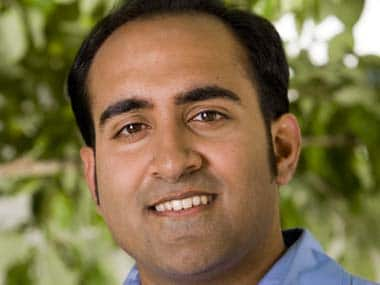New York: Still using the same tired marketing tactics you were using five years ago? Those won’t work in luring young Indian consumers. It is time for your company to rise to the demands of the digital age. To woo young people your stores have to undergo a high-tech revolution. It wouldn’t hurt to get touch-screen displays and giant storefront LED screens.
Last fall, Ralph Lauren projected onto the facade of its New York-based Madison Avenue flagship store 3-D polo players breaking through the storefront and models standing four-stories tall.
Marketing trends look even more digital in 2012. Mobile versions of websites are becoming the smartest trend. If you do nothing else in 2012, strongly consider a mobile version of your website. The overall goal is to give consumers the ability to buy at any time and in any fashion - offline or online - in any place.
[caption id=“attachment_167922” align=“alignleft” width=“380” caption=“A customer holds a pair of Apple’s iPad 2 tablets. Gen-Y are adept with every sort of electronic gizmo and love to shop.Reuters”]
 [/caption]
[/caption]
In the past, a faceless corporation worked because big also meant being credible. This is no longer true. Gen-Y will not tolerate anything that talks down to them, and embraces irony and humour with glee. They’re adept with every sort of electronic gizmo, are passionate about the environment and love to shop. To start marketing cool, companies and their brands have to find their personalities and define it.
Firms sans personalities = inhuman blobs
“The age of the faceless corporation is over,” Rohit Bhargava, author of Personality not Included, told Firstpost.
“Faceless companies never laugh. They have inane policies and laughable marketing proclamations but are loath to poke fun at themselves. Companies that can do this automatically win credibility for being more authentic and real,” said Bhargava, who is a founding member of the 360 Digital Influence practice at Ogilvy Public Relations.
Impact Shorts
More ShortsBhargava has served as lead strategist for many of Ogilvy’s largest accounts including Intel, Ford and Unilever. He says he defined a company’s personality with three core elements. “The personality of an organization is a combination of what is unique, authentic and talkable about it. The UAT filter helps you identify a company’s personality by looking at these elements,” said Bhargava.
[caption id=“attachment_167921” align=“alignright” width=“380” caption=“Rohit Bhargava. McGraw Hill”]
 [/caption]
[/caption]
Channel Interactive marketing
Shift marketing rupees to media that offers cost-effective campaign execution and an opportunity to engage in dialogue with your customers. In other words, think digital or interactive marketing.
According to Forrester Research, interactive marketing spending will reach $61 billion by 2012. Interactive encompasses new marketing channels such as e-mail and search marketing, online video ads and social media. Mobile marketing which is a form of interactive media is getting hotter as consumers get comfortable using personal computing handsets. Strongly consider a mobile version of your website. If you choose to create an app, keep in mind you will need to create multiple apps to work on various systems (Android, Apple).
Other emerging channels, including game marketing, podcasts and RSS feeds, will claim increasingly larger shares of marketing budgets.
Talk to your customers
Tony Hsieh, the CEO of online shoe and clothing shop Zappos.com says his company loves to talk to customers, and classifies customer service as a marketing investment, rather than an expense that must constantly be slashed. “Zappos has no metrics that reps have to hit around calls per hour, average time per call, or other silly nonsense that leads to frustrated customers,” said Forbes. It pointed out that some businesses were even taking it a step further, by turning their most prolific fans into advocates and online sales people.
Several companies have recruited an online sales force made up of their most loyal and knowledgable customers and are paying them with cash and gear for answering live chat requests from prospective customers on their websites. “After all, who better to make authentic product recommendations and answer detailed product questions, than the customers already using them?” asked Forbes.
Fallibility Marketing
Fallibility Marketing is an idea that sometimes when you make a mistake it can be a good thing to promote your business. Real people make mistakes and have to own up to them, yet companies have traditionally done this poorly. The typical faceless corporation will refuse to apologize and offer small compensation.
Fallibility Marketing is about taking those moments when you make a mistake or something goes wrong and turning them into an opportunity to build an even stronger bond with your customer. The other thing to remember is that this will not work if you always make mistakes.
Karmic Marketing
Karmic Marketing is this idea that you can do something good for your customers and at some point in the future that will come back to benefit your company. It is a very un-businesslike idea because businesses are so bottom line focused. Karmic Marketing is not something you can assign a line item to saying this percentage of sales came from this. You have to trust that good will come from doing good.
Is this an India-inspired cosmic principle? “Yes, it is. It comes from the familiar concept that what you do today will somehow come back and affect what happens to your tomorrow in an unpredictable way,” said Bhargava.
)